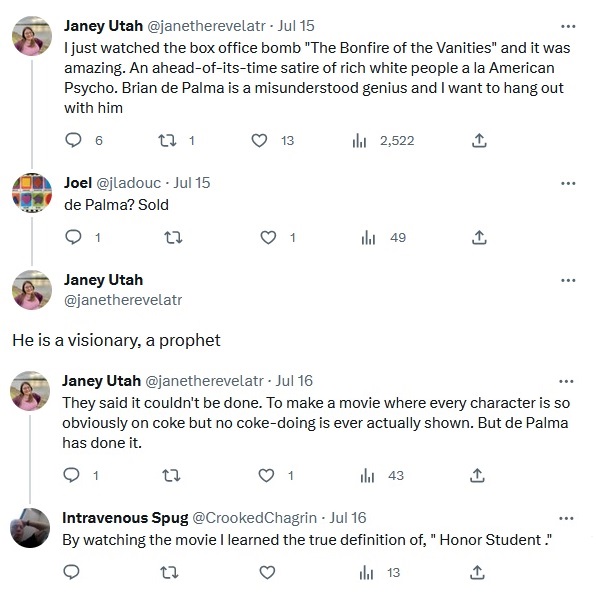
 Hello and welcome to the unofficial Brian De Palma website. Here is the latest news: |
|---|
E-mail
Geoffsongs@aol.com
-------------
Recent Headlines
a la Mod:
Listen to
Donaggio's full score
for Domino online
De Palma/Lehman
rapport at work
in Snakes
De Palma/Lehman
next novel is Terry
De Palma developing
Catch And Kill,
"a horror movie
based on real things
that have happened
in the news"
Supercut video
of De Palma's films
edited by Carl Rodrigue
Washington Post
review of Keesey book
-------------
Exclusive Passion
Interviews:
Brian De Palma
Karoline Herfurth
Leila Rozario
------------
------------
| « | July 2023 | » | ||||
| S | M | T | W | T | F | S |
| 1 | ||||||
| 2 | 3 | 4 | 5 | 6 | 7 | 8 |
| 9 | 10 | 11 | 12 | 13 | 14 | 15 |
| 16 | 17 | 18 | 19 | 20 | 21 | 22 |
| 23 | 24 | 25 | 26 | 27 | 28 | 29 |
| 30 | 31 | |||||
De Palma interviewed
in Paris 2002
De Palma discusses
The Black Dahlia 2006

Enthusiasms...
Alfred Hitchcock
The Master Of Suspense
Sergio Leone
and the Infield
Fly Rule
The Filmmaker Who
Came In From The Cold
Jim Emerson on
Greetings & Hi, Mom!
Scarface: Make Way
For The Bad Guy
Deborah Shelton
Official Web Site
Welcome to the
Offices of Death Records

Question: HOW DID YOU GET INTO THIS CHARACTER?Johansson: Luckily I had what a lot of actors don’t have which is the source the book. I mean, you read a script and you interpret the character’s emotions through their actions and their words, but I had the perspective of Bucky’s character looking in on Kay. So I really used that as the beginning source the character.
Question: WHERE DID YOU SHOOT THIS FILM?
Johansson: We filmed it in L.A. and we filmed it in Bulgaria as well.
Question: WHAT DID YOU SHOOT IN BULGARIA?
Johansson: We shot most all of the interiors there. Dante Ferretti had built the sets and he actually built the Chinatown set there. He had built the apartment there that they find. He built the interior of the house there and the boxing ring and the police station. A lot of it was just there.
Question: DID YOU HAVE ANY PRECONCEIVED NOTIONS ABOUT BRIAN DE PALMA BEFORE GOING INTO THIS PROJECT AND HOW DID YOU GET INVOLVED WITH IT? ALSO, DID YOU HAVE A THEORY AS TO WHAT REALLY HAPPENED TO ELIZABETH SHORT?
Johansson: Well, when I had become involved with the project, and I was originally excited just hearing that Brian had a film that he was directing with two female roles. I’ve always wanted to work with him and have been a huge fan of his. I met with Brian. I had read the script and was very attracted to the character of Kay. So, I met with him and I tried to convince him that I could play this character that I’m completely physically wrong for and he bought it. So that was good. I never have any preconceived notion of people because I find that they always prove you wrong or are surprising. I expected a certain kind of darkness about him, a certain kind of roughness about him I guess, and I was surprised to find out that he’s a very funny guy. He’s very funny. One thing that didn’t surprise me about Brian is that he’s really cut and dry. He’s never going to beat you around the block regarding anything and he’s never wishy-washy about anything, which is such a relief. As far as my own theory, I had read ‘The Black Dahlia’ and that seemed like a palpable (note: maybe she means plausible?) story. I don’t know though. I mean, that seemed to be – I felt that was interesting and was definitely a candidate for the truth, but who really knows.
Question: YOU SEEMED SO COMFORTABLE IN THIS PERIOD. DID YOU DO A LOT OF RESEARCH ON THE TIME PERIOD OR WATCH A LOT OF FILM NOIR FILMS?
Johansson: I never thought that actually the character was a femme fatale and she didn’t go out there to ruin someone’s relationship or steal the man or anything like that. She’s not trying to seduce him into this dark kind of relationship or torrid affair or anything. She likes him and she falls for him, but of course I have a pretty good film history for someone my age too. I’ve seen a lot of those noir films. It’s fun to watch them too. Films like ‘The Maltese Falcon’ or ‘Third Man.’ But I always liked film noir, but some of those films are too kind of cops and robbers for me. I like the more melodramatic Bette Davis films of that period, and stuff like that. But there wasn’t anyone that I really based the character off of. I wasn’t trying to copy someone’s performance or something like that, but it was interesting to see that. And well, of course as a modern actor we have this movement that sort of started in the ’70’s of realism and the gritty kind of natural – whatever you can bring to the table, that kind of technique. So it was interesting to pair that with the dialogue. The dialogue is so stylized and impossible [Laughs] and impossibly unrealistic. It was interesting and it was a challenge to try and keep the integrity of that with ease and the realness of it while also saying things like, ‘How could you, Dwight? How could you?’ I mean, you never say those things. It was so dated, that kind of dialogue. It was a challenge to make that not such a film type dialogue.
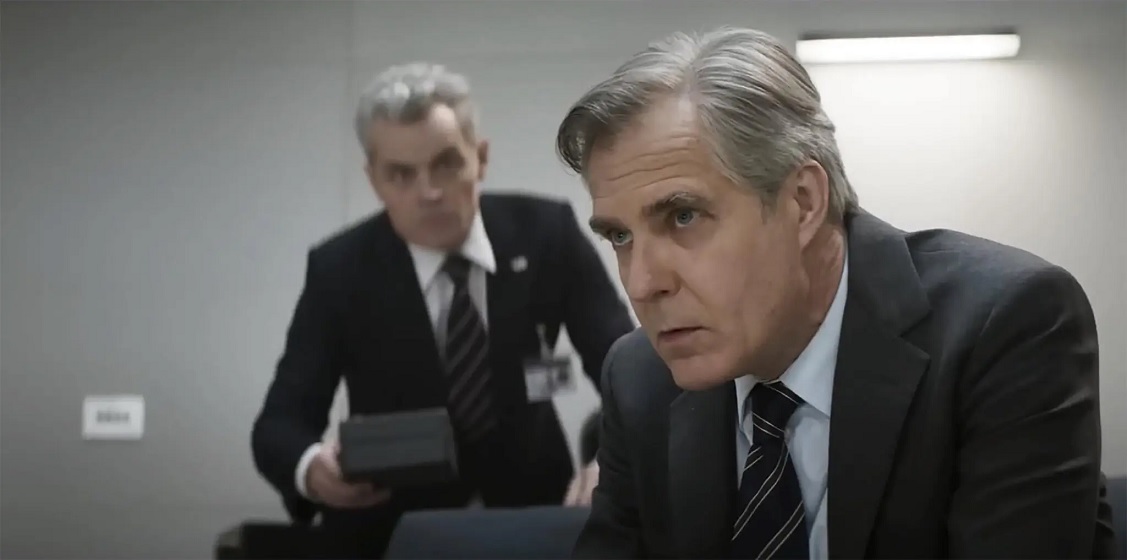
“Mission: Impossible” is a franchise known for its big-budget, death-defying stunts, but sometimes there’s nothing more suspenseful than a good old-fashioned, face-to-face staredown.That’s what the actor Henry Czerny brought to the first film in the series, released in 1996. As the officious Kittridge, director of the Impossible Mission Force, Czerny sneered at star Tom Cruise with such delicious condescension that their tetchy tête-à-tête in a Prague restaurant — shot at deliriously canted angles by the director Brian De Palma — became one of the film’s highlights.
Six films later, in the new “Mission: Impossible — Dead Reckoning Part One,” Kittridge has returned to sneer and spar some more with Cruise’s superagent, Ethan Hunt. Christopher McQuarrie, who directed the last three movies in the franchise, said he had long intended to have Czerny return to the fold.
“Henry’s Kittridge is not a villain,” McQuarrie wrote in an email. “He’s not even an antagonist. He’s a worthy adversary, walking the line between a guy we love to hate and want to like. He’s a bastard, but he’s a bastard we want on our side.”
When the 64-year-old Czerny boarded the new film, he was surprised at how fluid the production was: McQuarrie and Cruise knew the action set pieces they wanted to include, but the scenes stitching them together were still up for grabs. Much of the exposition that would set up those sequences eventually fell to Czerny, who can deliver stakes-setting information with musical grace.
If that’s the distinctive flavor that Czerny can provide, he’s happy to deliver it. “I binged on ‘The Bear’ last night,” Czerny said during a video call last week, “and this image of ‘Mission: Impossible’ keeps coming up as a beautiful French dish, in that everything has been reduced so the flavor is profoundly intricate, unique, separate.”
Here are edited excerpts from our conversation, held before SAG-AFTRA went on strike.
Chris McQuarrie has said that ever since he took over directing duties on this franchise, he’s been looking for the right time to bring you back. Were you aware you were under consideration?
I had no idea. As a matter of fact, when I got the call, it was 25 years almost to the day when Brian De Palma and Tom decided I was going to be their Kittridge. In January 2020, McQ wanted to talk to me about bringing Kittridge back. I thought it was a little bit of a joke, and he said, “No, seriously.” So I spoke to him the next day and he said, “We’re not sure what we’re doing with the script yet.” I thought, “Yeah, you’ve got a script in the bottom drawer somewhere. Come on, you’re just not telling me what you want to do with the guy.” But the script is very fluid.
What did they tell you about why they brought you back?
I think he was brought in as a burr that we remember in Ethan’s shoe. The original idea was that he represented the bureaucracy — the C.E.O. or whatever — that doesn’t like the asset to be human. So with Ethan, he’s the world’s asset. And the American people who Kittridge, to a certain extent, believes he represents, they’re his shareholders. He doesn’t like that there’s one person they’re beholden to. However, who else are you going to call?
How has he changed since we saw him in the first film?
I asked McQ, “OK, what do you think he’s been doing for 25 years?” It wasn’t really bothersome to McQ that there wasn’t an answer for that, and I was somewhat taken aback. At the same time, McQ has such a wide focus, and those particulars are allowed to be brought to the screen by the actor: “You do your homework, you let me know and we’ll sort it out, and we’ll actually do several versions of what you think he’s been doing.”
So before I arrived in London for my fitting on a film that really had no script at the time, we had an idea of what we were going to do. I figured Kittridge got schooled by Ethan 25 years ago, so he figured, “OK, I’m going to work in all the other agencies in Washington because I don’t like being schooled by somebody who’s younger than me.” So I think he’s worked everywhere he could at as high a level as he could, and came back to run the Impossible Mission Force a great deal more edified. He has a sadder but wiser knowledge of how the American intelligence machine works and who it’s working for.
How did things evolve with the character?
McQ has a process that can be really intimidating for actors who haven’t done this before. What I’m used to after working on a show [he has appeared in several series, including “Revenge”] for a few years is you’ve got two takes, maybe, because we’ve got 12 pages to do today. You’ve got to pick a couple of things and we’ve got to move on. But with McQ, something will come out based on what you’ve packed and he’ll start adjusting it. He’ll allow you to go in a certain direction. And then you’ll go back and reshoot it if you want.
So what he was after, we realized, was this kind of older-brother thing going on between them. Kittridge is clearly trying to keep Ethan in line, doesn’t want to let him have all the marbles, but there’s a profound respect for him as well. And McQ was allowing those flavors to show up in plenty of takes so that when he got into the editing room, he can hone the scene and it’ll have those flavors distilled.
What do you think makes your face-offs with Tom so delicious?
When you’re working with Tom, there’s a focus that’s available to you, and you can disappear. You just can open the tap and see what comes out. Kittridge and Ethan obviously are coming at the issue from different sides. Kittridge believes that he’s operating on behalf of his shareholders, as is Ethan. But Kittridge’s personal investment in success is deeper than Ethan’s: Ethan’s idea of success is that we all are better off, Kittridge’s idea of success is that we are better off.
You seem to take such delight in his lines.
Oh God, right? Like, why wouldn’t you? It’s luscious stuff. I started with classical theater, and it’s rare that you get to say some of the stuff Kittridge gets to say in a genre film. Some of the stuff is beautifully written. And there’s a cadence that comes out that apparently is somewhat unique to Henry Czerny, I found out.
Over the course of your career, you’ve played your fair share of exposition-delivering characters. How do you make those lines juicy?
By finding the absolute elemental flavors in the intent. What am I trying to convey? What are the stakes if I don’t convey it? And what am I going to do to convey it clearly and as quickly or as profoundly as I can? And that creates the cadence.
A perfect example of that is your centerpiece scene from the first “Mission: Impossible.”
I will tell you, and Tom will corroborate me on this, some of these scenes show up a day or two before, so you don’t have a lot of time to go over it 200 times and have it be part of your system in a way that you would like. But with that scene, there wasn’t a word change at all. I don’t know why, but that day, De Palma was very on me about commas and periods: “No paraphrasing here.”
Are you good at pretending that the camera’s not there when it’s as close as De Palma likes to put it?
I wasn’t so much then, but I am now. That’s why the scenes are so interesting, I think, between Ethan and Kittridge: There is an intimacy there that I try and maintain.
In the new film, your very presence in a scene seemed to make the camera angles more dramatic.
Oh, yes. Vanessa [Kirby] and I shot the train scene, and then we shot the scene between Ethan and Kittridge — a reshoot, because they’d added a character. We went and shot some of it, and they were shooting from the De Palma angles, we’ll call them. Then they looked at each other and thought, we’ve got to go back and reshoot the train scene.
Really? They reshot the whole train scene with more canted angles?
It worked thematically. The intent begot the form. It wasn’t an add-on, it was, “Oh, that’s right. Let’s go back and do that.” That’s the way they put these things together.
What do you remember about being cast in the first “Mission: Impossible”?
I didn’t want to do it at first. I was in Brazil and I was not in a good frame of mind, I didn’t speak the language, I hadn’t slept in weeks, and we were shooting nights [on a Brazilian film] — it was a disaster. I got a call from my rep, saying, “Brian and Tom want you to do their Kittridge.” I said, “I don’t think I can do it.” He said, “Henry, you’re doing it. I don’t know what the hell you’re thinking, but in three weeks’ time, you’re going to be back here and you’re going to be doing that.”
OK, fine. I went to the C.I.A. for a couple of days and I chatted with the people. I thought, “How does this work? They’re not going to tell me everything, but I want to have some juice in there.” When I went to do rehearsal for “Mission,” the first one, I had all these ideas: “You know, what actually happens is blah, blah, blah.” Brian said, “Good to know, but we’re not doing a documentary.” However, that research helped ground the character a little more for me. After the first film, did you expect to continue with the franchise?
Oh, there’s a story there. At the end of it, I thought I would have a lunch with [producer] Paula Wagner because I was optioned for the second one. We discussed what Kittridge could have been doing in the first one, what I think you should be doing in the second one. Paula Wagner listened very politely, paid for the lunch, and that’s the last I heard from her. I burned the bridge with all these notions of what Kittridge should be doing. It was my highfalutin idea about what I had to offer Hollywood after only my second film there.
It must be very full circle to come back to this franchise with a director who’s actually welcoming every thought you’ve got about the character.
Who would have thunk it? Be patient, keep honest. Lo and behold, really cool stuff will show up.
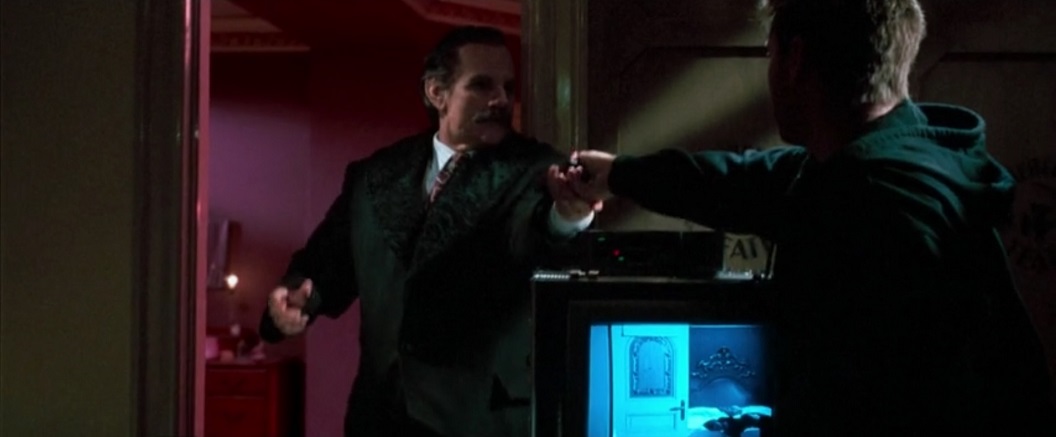
In the very first scene of the very first Mission: Impossible film, Ethan Hunt (Tom Cruise) is interrogating a Russian guy. We don’t know it’s Hunt, though, because — in perhaps the most iconic running bit in the M:I universe — he’s wearing an extremely lifelike rubber mask. Two minutes into the scene, he walks over to the Russian, drugs him till he passes out, and then pulls off the mask, dramatically revealing the face of a slightly flushed and rumpled Cruise. (It’s hot under all that latex.)Shortly after that first reveal, the walls of the room fall outward into a warehouse, which makes for a bigger reveal: The whole scene was faked. Not only was the now-immobilized Russian hoodwinked, but the audience was tricked into believing their senses. For us, the moment is delightful; for the laid-out man, not so much.
That opening parry for Mission: Impossible, created and produced by Cruise as a spy-action franchise for himself, showed up in movie theaters in May 1996, with Brian De Palma (of Carrie and Scarface) in the director’s chair. Compared to the latest installment in the franchise, frequent Cruise collaborator Christopher McQuarrie’s Mission: Impossible — Dead Reckoning Part One, the 1996 version is much sweatier, darker, and kind of erotic. (A Brian De Palma movie indeed.)
The omnipresent unmaskings, of which there have been at least 15 or 20 by now, are still a mainstay of the films. What’s so great about those reveals, in particular, is that you’re rarely actually expecting them. Dead Reckoning Part One plays with this a little, but for the most part, through all the films, any guy at any time could rip his face off and you’d still be like, “Wow, I did not see that coming.”
The new version is like its predecessors, employing a trope borrowed from the TV show that spawned the film: trickery around every corner, a sense that you can’t quite believe what you see. Dead people turn out to be not-dead people. Walls of rooms keep falling apart to reveal they’re constructed in some warehouse somewhere. Everyone could be a rogue agent or maybe not, and the movie sure isn’t going to wink at you about it till it’s good and ready.
That those twists and turns keep surprising us seven movies in points to what’s truly delightful about the Mission: Impossible franchise, and what makes it, in my opinion, both the most inventive and the most satisfying long-running franchise in Hollywood. On one level, M:I is wonderful because the convoluted plots are pretty much beside the point; if they can be said to have a consistent theme, it is “Tom Cruise likes almost dying on camera.”
And yet once you’ve watched them all, you can detect a kind of meta-theme to the M:I movies. It stems from a simple moviegoing fact: Most of us believe that what we are seeing in a movie is how things actually happened in the world of the movie. It’s why a movie like A Beautiful Mind or Big Fish or The Irishman is so memorably affecting; we are trained to believe our narrators, and when it turns out that what we’ve been watching is not quite what actually happened, it’s thrilling. New meaning emerges from the mismatch.
Mission: Impossible plays on this expectation, though there’s no specific perspectival narrator. The thrill comes from occasionally discovering that what we’ve been watching is an elaborate fake-out. Sleight of hand is everywhere. Don’t trust your senses, Mission: Impossible exhorts us — they’re easily manipulated.
This is underlined, in another meta-heavy way, by what makes the films so distinctive: Cruise’s incredible, literally death-defying stunts, every film seeming to take them to a new level. He climbs up sheer rock walls, leaps across rooftops, fights cliffside, and hangs off the side of a flying Airbus A400M. Each time a new Mission: Impossible movie is released, it’s accompanied with marketing material that mainly leans on explaining that yes, Tom Cruise did actually climb the Burj Khalifa. Personally I, and I suspect Cruise, will not be satisfied until Ethan Hunt is in outer space. (Oh, he’s doing it.)
Why emphasize that he’s actually doing these stunts (albeit with cables and nets — you could never afford to insure the production otherwise) as the lynchpin of the M:I marketing? First, of course, because it is pretty badass. But the second reason is obvious: While action is a mainstay of American cinema, particularly in superhero movies, we all know they’re flying around on soundstages and are CGI’d within an inch of their lives. It’s all spectacle, but with no reality.
With Mission: Impossible, however, our deceiving eyes don’t quite extend to the stunts. Yes, there are tricks of the camera and computer going on. But Tom Cruise is actually driving a motorcycle off a cliff and then plummeting down. That’s real — real enough to gasp and hold your breath and get a little shaky. It’s as much a mainstay of the movie as the mask trickery, and that subtle play with what we’re seeing, with the real and the unreal, suggests the movies might be doing this very much on purpose.


Now let's bounce back up to the first two paragraphs of Durr's review:
The Mission: Impossible intellectual property has existed for the better part of 50 years dating back to the original 1966 American espionage television series. A procession of films starting with Brian De Palma's 1996 delineation of the source material enkindled a strong following of action thrill-ride enthusiasts, each awaiting the latest death-defying feat from the ageless wonder himself, Tom Cruise. With each subsequent film, the series has shifted away from De Palma's trademarked directorial techniques such as point-of-view perspectives, split-diopter shots, and cross-cutting to manufacture enough rising tension in the edit. The core fundamentals of the spy espionage sub-genre have largely taken a backseat since then, instead relying on spectacle as the main selling point. Mission: Impossible - Dead Reckoning Part One comes full circle with the series' roots, however, recapturing that classic De Palma tension while upping the ante with a few truly inspiring action set pieces.Atoning for the failures of the past and reconciling with the repercussions are the central themes of this newest rendition. As the film's cinematic qualities are heavily influenced by the past, so is the narrative, attempting to interweave pieces of Ethan Hunt's tempestuous history with a threat that portends the well-being of his fellow Impossible Mission Force crewmates. Dead Reckoning also feels timely, centering the film around a sentient artificial intelligence whose ability to infiltrate secure databases and control information spawns a global race for control. Artificial intelligence, the ability to process human intelligence through technology, has dictated the conversation as we implement various AI-generated applications into our daily lives. As advancements in computer sciences grow, artificial neural networks augment in complexities, making artificial intelligence a useful, but dangerous tool.
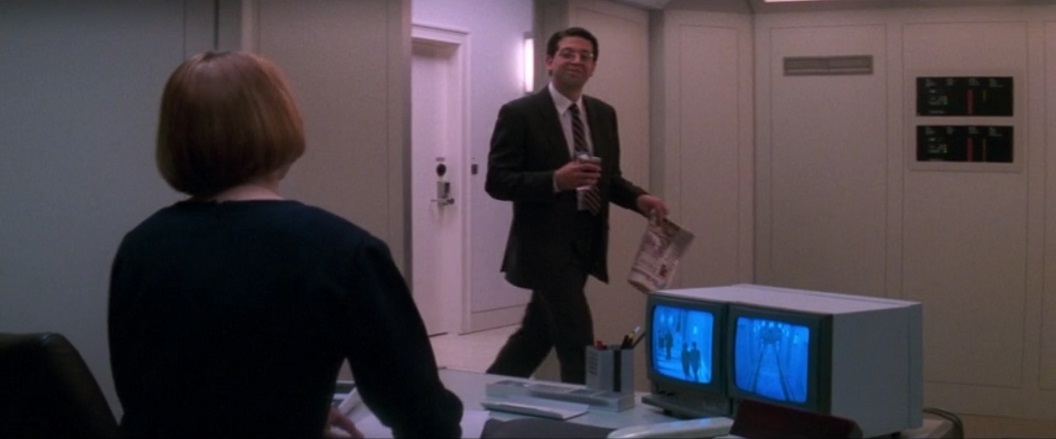
JC Calciano (Production Associate to Paula Wagner):
Honestly, I don't think anyone knows this. I think that five of us who were in this meeting ... I truly don't think anyone else outside of this meeting even knows this. When we were writing the script, we brought in a friend of mine. I had produced a movie in Arizona, and I met this woman who was a CIA agent. She and her husband were both CIA agents. So I brought her in as a consultant to help with the movie. Her name is Sue Doucette, and she came to London to help us as a consultant.When we were working on the script and talking about the script, she told us that — and this is true — the CIA had a room that was ... I think there was a name for it, but I don't remember. There was no outside connections into this room. So this way, nobody could get to it. This particular room was the most secure room at the CIA. The only way you can get in is by one door with one agent. We wrote this scene based on her notes and experiences on that. She was so great, and she was so helpful. We hired her to be the actress who stands guard at the door for that scene.
The idea was to keep it as quiet as possible. This is an incredibly difficult chore for the sound editors, who can't stand silence — it just drives them crazy. And there was a closeup of the rope going over a little wheel, and they put in a tiny little squeak, and we had to say, "No, take it out, take it out. They wouldn't go in there with a squeaky wheel. This is 'Mission: Impossible!' They get it right." So we tried taking everything away, and that just didn't quite work. So there's a little bit of air going on.
As a director, Brian De Palma was really great at creating tension and suspense, because it's all about the setup, and he was masterful at setting up the task and then creating obstacle after obstacle. So the threat had to be taken out of commission. I mean, this is beautiful teamwork on the part of Tom's team. This had to be so carefully orchestrated, so at the right moment, at the exact time, with the right dose, [Claire] had to put the drop in his coffee.
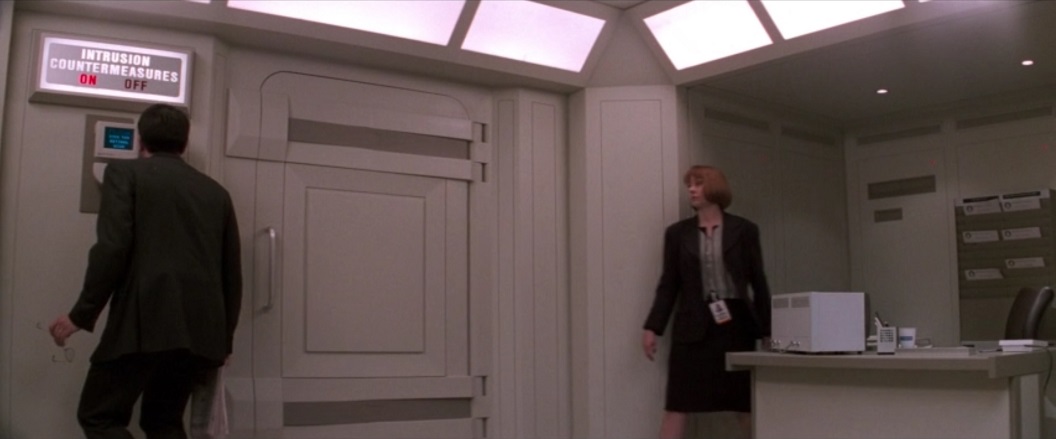
Rolf Saxon:
I was on it for, I think, two weeks, and I was working on [another] picture interspersed with that. I was being taken from one set to the other set, so I worked three weeks solid without a day off. That was great. Not complaining. I loved it. It was fun. But I got a little punch-drunk every once in a while, and I was messing around on set, joking around. The first [assistant director], Chris Soldo, came over and said, "Brian wants to have a word with you." And the look on his face was not good. I thought, "Oh jeez, here we go." [Brian] asked me to come over, I came over, and he said, "You're something of a clown, aren't you? A bit of a clown." Chris had said, "Look at me, and if I shake my head no, don't answer." He was standing behind Brian, and Chris and Brian had worked together for 10 years. Chris is a great guy. We're still friends.So basically, there was a little bit of back and forth, and [Brian] said, "Can you do that again?" And I said, "I beg your pardon?" And he said, "Can you do that again? Make people laugh like that? Everybody was laughing, and I'd like to put that in the show." And I said, "Yeah, sure!" He said, "OK, after lunch, we'll spend a couple hours and put some funny stuff in." So after lunch, we spent all that afternoon and part of the next morning putting in a bunch of stuff, almost none of it which is still there. But the throwing up is. He said, "Do you want noise to happen?" Brian asked if I wanted noise in the bucket. I said, "No, I think they'll get the idea. My thinking is we don't want to gross people out, we want it to be sort of amusing." And he said, "OK, cool. Fine. Fine. That's great. Good idea," as he turned away.
The closeup of the catching of the drop, that was done by a second unit. Brian's protege, second unit director Eric Schwab, who did all of the plate photography in Ireland for the train sequence. That was one of the shots that was handed off to him.
Catching the drop of sweat from the glasses, that was fun. I got to do that. That's actually my hand in there. But this camera was shooting 360 frames per second and it makes so much noise. I mean, I think you get one take for a roll of film on that because it's just going through so fast. I know I wasn't hanging in wires when we did the actual high-speed camera and the sweat dropping because it was such a closeup on the drop of sweat coming down and the hand coming in to catch it.
In Donloe's final scene, there was a particular gentleman who said, "And what about him?" and at one point, he ad-libbed, "And what about the geek?" and De Palma cut filming and said, "What did you say?" He said, "What about the geek?" and [De Palma] said, "Don't call Rolf a geek." I think that was the nicest thing he'd ever done to me in the entire two or three weeks. That was just really nice of him to do that.
JC Calciano: Princess Diana came to set one day. So that's how much [attention] we were getting, because Tom was there. It was a funny story that I get a phone call. Now, I'll tell the story. It doesn't put me in the best light, because I was a 30-year-old, 30, maybe, young guy, American, not really savvy to the royals or any of the English stuff. But I get a phone call that said, "Princess Diana would like to come to the set. Can she have a tour?" So I'm like, "It's your country. Sure. She wants to come." So she showed up, and she just rolled in. She didn't have anyone other than Harry and William with her. She just rolled in, and one of the production staff comes in into my office, ashen. They're like, "Princess Diana is in the production office, asking for you." Nobody knew, and I didn't think to tell them. So she came in, and I was like, "Oh, all right. I'll be right there."Anyway, so then she came in, and she was lovely. I showed her around the whole location and stuff, and she's like, "Oh, can I meet Tom Cruise?" I was like, "Yeah, let me tell him you're here," which I hadn't even thought before, like, "Oh, let me prepare anyone for her." So she came, and then it's like, "Tom, could you see Princess Diana?" He's like, "Of course. Of course. Set it up. Set it up." I'm like, "No, no, no. She's right here." He goes, "She's here with you?" I was like, "Yeah, I'm showing her around." [He was] like, "No, no, God. Come in. Come in. Come in." It was just funny how casual it was.
Keith Campbell: Everybody says, "Hey, tell us the story about your career and stuff," and [this] is the best story of my entire career. Because I was in there rehearsing, hanging upside down, coming down from the ceiling, and the door of that set opens up and in walk Tom Cruise and Princess Diana and William and Harry. They came to visit the set and that's where I got to meet them. It was just unbelievable. I was hanging upside down and Tom introduced me to Princess Diana and the boys while I was hanging upside down and she reached up and shook my hand. It was so sweet.
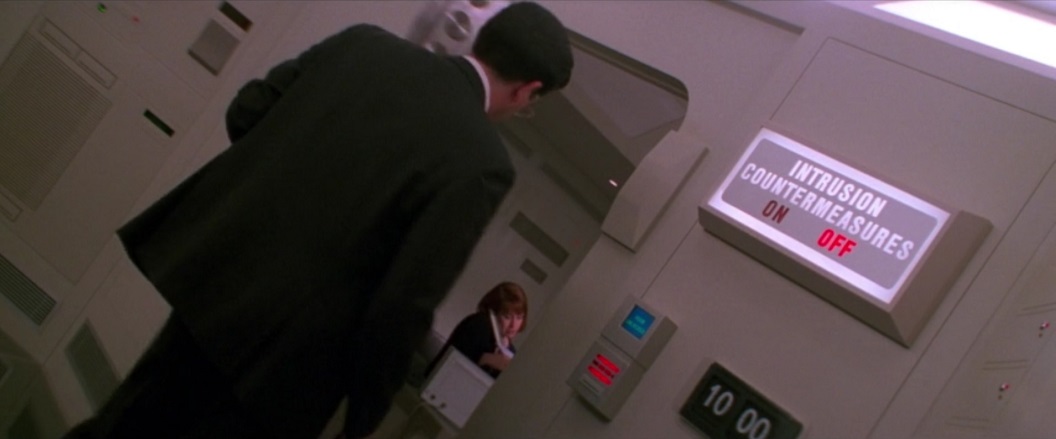
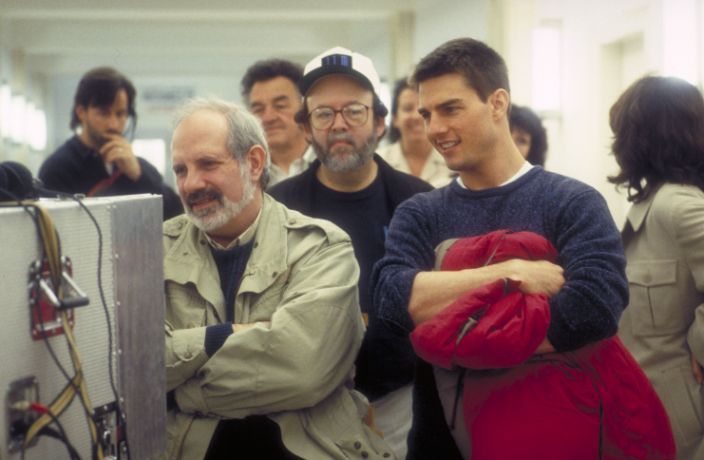
Here's an excerpt:
For all of Cruise’s stomach-lurching stunt work in M:I sequels – including the latest, Mission: Impossible – Dead Reckoning – the CIA heist is still the series’ most enduring moment. It’s also the truest to the 1966-1973 TV series: a seemingly impossible mission, pulled off via intricate planning, crafty deceptions, and teamwork.It’s stunning craftsmanship from Brian De Palma – a true master of suspense, demonstrating the same precision-perfect execution as the Impossible Missions Force. The tension De Palma squeezes from a single bead of sweat is incredible.
Cruise did the stunt work, naturally, beginning a trend that has intensified across the sequels. Dangling upside down for a few hours seems like small potatoes compared to clinging onto a plane during take-off. But it was punishingly hard to do. Attempting to hang parallel to the floor, Cruise kept tipping forward and bashing his face – so he stuck £1 coins in his boots to balance himself out horizontally.
It was De Palma who came up with the sequence, inspired by a similar set-piece in the 1964 heist movie, Topkapi. De Palma filmed the heist in near-silence – another nod to Topkapi, and a deliberate reaction against the sheer racket of other blockbusters. “All the action films coming out were so noisy!” says [Paula] Wagner. “What could be done that was different? Silence. You couldn’t have a sound in that sequence. Nothing could disrupt the flow and ambiance in that room. That was unique unto itself – the concept of silence.”
Indeed, the 1996 Mission: Impossible was a different kind of blockbuster – a complex thriller with perspective-shifting rug-pulls – and markedly different from what the series is now. Not that modern M:I isn’t good stuff. It’s the most consistent and wildly inventive action series around. But even Dead Reckoning – out now – has tipped its hat and rubber mask to the first movie.
Mission: Impossible was the first film that Tom Cruise produced himself. It was also his idea. “The conversation I remember most clearly was Tom calling me and saying, ‘We’re going to do Mission: Impossible – I love the series!’” says Paula Wagner. “And I loved it too.” Cruise and Wagner would also produce Mission: Impossibles 2 and 3 together. More recently, Wagner produced the Pretty Woman musical – on tour across the UK later this year.
Back in the 1990s, there was a Hollywood gold rush on old school TV properties. Between 1993 and 1999, there were also film versions of The Fugitive, Maverick, The Saint, The Avengers, and Wild Wild West. It preempted the current blockbuster formula. Almost 30 years on, every blockbuster is essentially a re-run. “This was early in taking a TV show and making it a movie,” says Wagner. “Now it’s done all the time. And this was before all the Marvel franchises. I think we were pioneers out there working out ‘What is this? How does this work as a movie? What are the elements that you keep? What are the things that you change and evolve?’ It was more than making a movie. It was bigger than that.”
But unlike The Fugitive et al, Mission: Impossible hadn’t been off screens all that long. Paramount had made attempts at an M:I film in the 1980s and brought back the TV show in 1988, with original series star Peter Graves. When Tom Cruise whipped off the rubber mask for the first time, M:I had only been off air for six years.
...
One of the major challenges, says Wagner, was “How do you reinvent a Cold War television series for a film in the mid-1990s?” Critics asked the same thing ahead of the film’s release. The original IMF team operated in the shadows of the Cold War. Regular targets included dictators and shady governments in made-up countries. Jon Voight’s IMF leader, Jim Phelps – the character played by Peter Graves on TV – comments on his place post-Cold War. “One day you wake up and the president of the United States is running the country without your permission. The son of a b––––, how dare he.” Phelps admits that he’s now just “an obsolete piece of hardware not worth upgrading.” GoldenEye, released just six months earlier, had similarly repositioned Bond for the 1990s – “a relic of the Cold War”.
Other changes were needed. The TV series had been about a team operation, with Phelps selecting his preferred agents at the start of each episode – each of whom had their own special skills to carry out their part of the mission. De Palma was not only subverting the conventions, he had to make M:I a star vehicle for Cruise, too. “The first thing we have to do is kill off the whole team,” said De Palma.
The film begins like the classic episodes: Phelps receives his mission (which he naturally chooses to accept) via a self-destructing tape, then assembles his team and plans out the mission. They have to seize a list of CIA agents from a target in Prague. But it’s a set-up. The team – including Emilio Estevez and Kristin Scott Thomas – are murdered one by one. Its rich De Palmian stuff: a dizzying swirl of trickery and kills, and shrouded in a thick fog of treachery. “You set the rules up and turn them on their head,” says Wagner. “You think you have your mission team, then they all die in the beginning! Just when you think it’s gonna turn out a certain way, it doesn’t.”
...
The 1996 action now seems relatively low-key – in contrast to Cruise trotting around the Burj Khalifa at 2,700ft, at least – though the film still hangs on three stunt sequences: the CIA HQ heist, a fight on a high-speed train, and Cruise jumping away from an exploding aquarium – a neat, watery twist on the standard jumping-away-from-an-explosion set-piece. Cruise performed the stunt himself, leaping away from literally tons of water, which required precision timing.
But Mission: Impossible is an unusually smart action film. In the later sequels, the trademark deceptions and confidence tricks are played like set pieces – usually punctuated by a punch-the-air mask rip. In the first Mission: Impossible, the deceptions are the fabric of the whole film. It wrong-foots viewers at almost every turn – a constant unraveling of misdirections, springing one reveal after another.
The labyrinthine plot wasn’t for everyone. After the film’s release, De Palma called Koepp and told him there was a one-word buzz about it: “Incomprehensible!”
In its smartest scene, Voight’s back-from-the-dead Phelps tries to sucker Hunt with an elaborate lie about how the botched Prague mission played out. Phelps narrates his version of events, but what we see is something completely different – Hunt figuring out what really happened. He knows that Phelps masterminded the double-cross. “If you look at De Palma films, his characters aren’t quite what you think they are – often appearances belie who the characters really are,” says Wagner about that sequence. “That was another aspect that Tom and I as producers really appreciated and supported. Not only the sleight of hand in terms of the action, but none of the characters were exactly who you thought they were.”
The film abandons the smarts for the final showdown. Phelps and Hunt fight across a train as it races through the Channel Tunnel – while Jean Reno gives chase in a helicopter. The new M:I film, Dead Reckoning, also stages a train fight – one of the seven-quel’s numerous nods to the first movie.
The original train showdown is still a thumping bit of action. It somehow puts you right onto the carriages – the feeling that you’re holding on for dear life just by watching it. When the classic Lalo Schifrin theme kicks in, and the helicopter rotor blade misses Cruise’s throat by a matter of inches, it’s undeniably thrilling.
Cruise and De Palma debated about whether to include the train-helicopter sequence. Cruise and Robert Towne, said De Palma, were pushing for the film to end with a mask reveal in the boxcar. De Palma would later deny reports of a rift between them, though they had a robust creative relationship.
“Tom is a very smart guy, and he had very strong opinions about things,” De Palma told Premiere magazine. “We would argue, but he always said, ‘Whatever you want to do, Brian.’ I made all the final decisions. We were deciding whether we needed the helicopter chase at the end. Tom thought about resolving the scene in the boxcar. I was pushing for the helicopter chase. I said, ‘We’re making Mission: Impossible here. We better have some wham-bang ending.’ I argued strongly about why I thought this would work, and he ultimately, I think, made the correct decision.”
Cruise certainly had no qualms about getting on that train. He clambered aboard the carriages at Pinewood Studios, in front of a blue screen, and was blasted by industrial-strength fans. “That’s really Tom standing on a train car with the wind coming in his face at hundreds of miles an hour. Trust me,” says Wagner. “It was very dangerous having to jump from one moving vehicle to another with the wind coming straight at him. We did it on the largest stage at Pinewood. It was very challenging. He would have been on a real train the whole time if he could.”
De Palma achieved what he’d set out to do. Released on May 22 1996, Mission: Impossible was the biggest hit of his career – $450 million at the global box office. “It’s better to make them at the end [of a career] rather than at the beginning,” De Palma told Wade Major about making a hit film.
Wagner credits its global success, aside from M:I being a great piece of cinema, to its international cast and clever promotion. “We treated Mission Impossible as a worldwide event,” she says. “This was an innovation in worldwide marketing because we focused on individual foreign markets rather than treating international box office as a monolith. We approached the rest of the world with the same fervour as domestic.” Paramount sent out a booklet of promotional ideas to cinema managers, which suggested – quite brilliantly – to put on helicopter rides or have sky divers dropping into cinema car parks for some extreme, gimmicky PR. (I must have missed that at our local Odeon.)
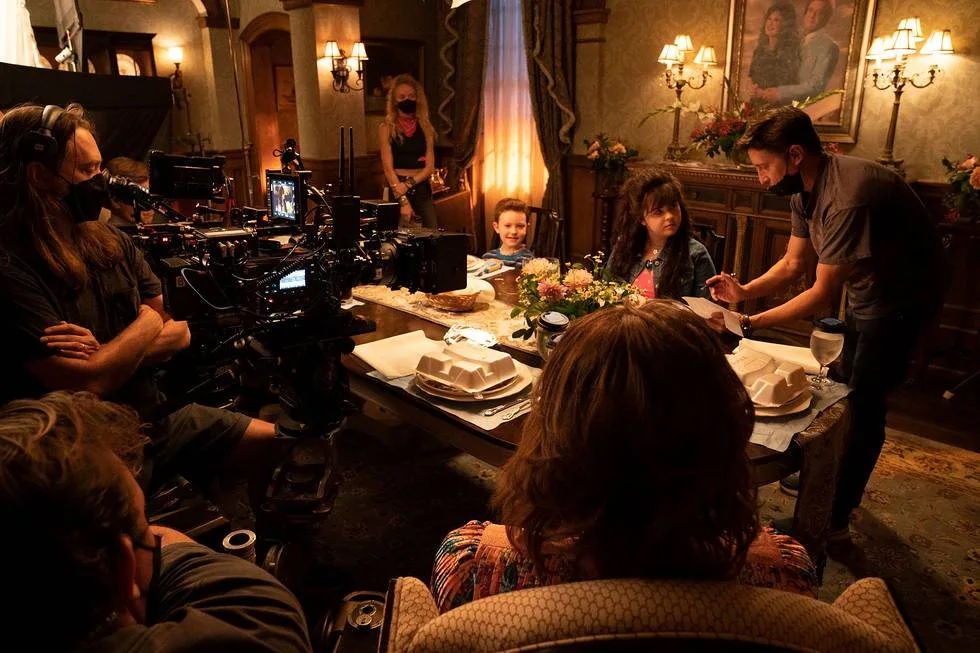
David Gordon Green returned to direct the series’ third flashback episode, and once again brought the audience back in time, as the Gemstones entered the new millennium. While the episode is set in 2000, Gordon Green explained how he and [Danny] McBride try to reference film and television of the 1980s and 1990s.As the show’s director and one of its executive producers, Gordon Green said he leans into melding genres, and called out this episode’s pop-culture references — allusions to Brian De Palma’s “Carrie,” Olivia Newton-John in “Grease” and the “Halloween” franchise, both the original John Carpenter movies and his revival of them.
“We’re not shooting it like a comedy,” said Gordon Green. “I think part of what gives it a little bit of scope, and an unlikely interest, is because it’s not just putting the camera in the comedy place and telling the joke.
“It lets something be unexpectedly exciting or unexpectedly dramatic, and not fall into the tropes of the genre,” he continued. “And then be able to be inspired by all genres and bring it into this, [rather than] make a show that could be formulaic and could be technically, traditionally executed.”
Gordon Green’s latest revision of typical tropes occurs in the episode’s final scene, when Peter attempts to rob a bank. Rather than following him into the bank, Gordon Green positioned the camera in the diner booth where Peter had sat moments before. With a protected barrier, the audience watches Peter unsuccessfully, and almost fatally, try to rob the bank to gain the funds he had poorly invested. Gordon Green explained how that final sequence involved Zahn, a stuntman and personal friend, to ensure the “Texas switch” went off without a hitch.
“We’re just trying to up the ante, and do something different,” Gordon Green said. “It was something you had to map out and choreograph and do safely, so nobody got run over. Then you hope that the lighting stays the same so you can do it all in one take.”
He added, “It was cool to end it [that way]. We always try to build it so that there’s a bit of a launch and a leap at the end of an episode, so that it has a bit of an opera to it.”
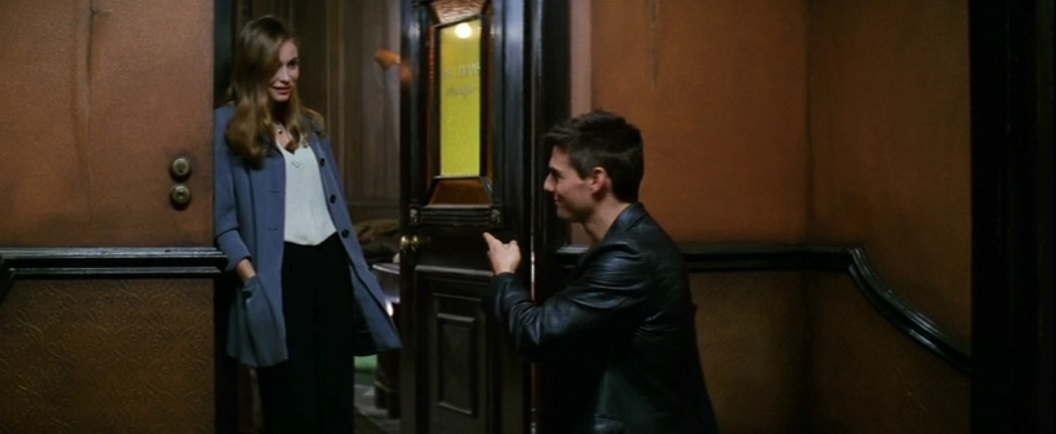
Applying the Frankfurt School’s critique of mass culture to this type of filmmaking would not be hard: Mission: Impossible is not very original; the structure of the whole doesn’t depend on details; it respects conventional norms of what constitutes intelligibility in contemporary filmmaking. It could be seen as an example of pseudo-individuation, that which seems different but is in fact the same, whose object is to affirm capitalist culture – Popcorn laced with discourses that propagate and sustain existing relations of power, lulling its audience into believing that they live in the best of all possible worlds. This type of criticism has often been levelled against Hollywood cinema. But though productive as part of a critique, it’s a dead end when it results in mere dismissal.The film also offers a pretty dystopic view of contemporary Western culture. There is no longer any difference between the East and the West. What happens in Kiev and Prague or Washington and London is similar. All are corrupt places with citizens under continuous surveillance. Government, which is supposed to protect, throws out morality, ethics, justice and law to get what it wants, going as far as attempting to kill an honest Cruise, who is simply and desperately trying to do the right thing. Family is far away, ineffectual, vulnerable. Friends are unreliable: they may have killed your other friends, and may yet kill you. Love, as personified by Emmanuelle Béart, is a source of longing, an object of desire (seemingly always deferred) and an instrument of betrayal (the femmes are pretty fatal here – and structurally subordinate in the narrative, as is Hunt’s Black sidekick, played by Ving Rhames; plus ça change…). The worst enemies of Western culture are the ‘Third World’ and terrorists. The worst thing that can happen to an individual is to be ‘disavowed’, to be cut off from one’s corporate community; to survive the hero must remain monadic. It’s a bleak view. The film’s utopia is a masculinist fantasy: that if one is Tom Cruise, all such problems will eventually be resolved.
This is a reading of the film that appears to give it a degree of depth. But to look at Mission: Impossible only in this way is perhaps to miss what is most interesting about it. It’s built around set-pieces (the interrogation scene in Kiev; the Embassy scene; the aquarium scene and the Hotel Europa scene in Prague; the burglary at Langley, Virginia; and finally the train scene, which begins in London) each involving some element of action and ingenuity (from characters or filmmakers). These scenes are woven through the film like songs and dances are in an old-fashioned musical: it isn’t so much that they don’t tell us anything about the characters, but that their function as spectacle exceeds their function as narrative. For exampIe, though we may need to know that Cruise’s colleagues are killed at the start, we don’t need to see it in such detail or to such effect to follow the story. Mission: Impossible is a star vehicle structured around a protagonist: but it is not important to know much about Ethan Hunt, the character Cruise plays. What’s important is how Cruise the star looks, smiles, jumps, leaps, outwits. In such movies, the star functions less as character than as an integral production value. Tom Cruise as ‘Tom Cruise’ in Mission: Impossible is its own kind of spectacle (as when he takes off his mask and is revealed to be ‘Tom Cruise’ during his star entrance at the film’s beginning); what’s more, it’s an integral part of the spectacle presented during the more elaborate action scenes (as when the wind buffets his body on top of the train in the final scene).
Like the musical using the order of musical numbers to create changes of pace and variation, Mission: Impossible tries to vary its own set-pieces in terms of length, tone and desired effect: the scene at the Hotel is medium-length and meant to be exciting; the scene in Langley where Cruise steals the diskette is long and meant to be funny and suspenseful; the scene where Cruise makes the diskette disappear in order to con Krieger (Jean Reno) is meant to be ingenious. The last action scene, the lollapalooza, is to function as the showstopper. It begins with a blast from Lalo Schifrin’s energetic television theme-tune, and reprises all previous effects (it has excitement, speed, suspense, humour and ingenuity), but faster, with more intensity and at a higher pitch.
And like the musical, much of the beauty of and meaning in Mission: Impossible comes from the expressive use of non-representational signs: colour, music, movement.
The scene at Langley where Cruise and company download the names of undercover agents into a diskette is a good example of the pleasures on offer. While Rhames hacks away at the security with his computer, Beart, Cruise and Reno disguise themselves as firemen to get into the building. Beart injects the coffee of the computer worker with a serum to force him to go to the bathroom, and plants a bug on his jacket so that his movements can be traced. In the meantime, Cruise and Reno have managed to get to the room via an airvent. So far, so familiar: this is reminiscent of the pleasures of James Bond, with gadgets, wit and a few punches thrown. As the scene proceeds, maintaining the humorous tone, a shift registers. Will the computer operator return too soon, intercepting Cruise stealing the diskette? Cruise is hung from the ceiling with wires, handled by Reno. We see a rat waddling next to Reno. Will this cause him to lose control? Will the sneeze he’s been controlling simply erupt, setting off the alarm? De Palma is a brilliant student of Hitchcock: these bits are funny and suspenseful.
And Reno does lose control. Cruise, previously floating downwards, now drops abruptly to only inches from the floor. He’s hung from wires, waving his arms as balance, to avoid touching the floor: thus the film offers us the pleasure of Cruise’s physique, his physical prowess. But his body is also reduced to a graphic element of the composition, albeit a gorgeous one: for example, in the high-angle shot which shows us Cruise (dressed in black) against a white floor crossed with thin black lines. His body seems two-dimensional; it seems to disappear into the pattern as if matter had dissolved into geometry.
Two separate moments make this scene thrilling: a drop of sweat about to hit the floor and Reno’s knife falling to the floor. Both are exciting only because of their context (if either lands, this could ruin the mission). They involve quick cuts, to enhance the sense of danger and to give an impression of movement. But they also involve the use of slow motion, to arrest and break down movement.
The combined effect is that of the sublime. The slow motion fixes our gaze with awe; the quick cuts rush us headlong into terror. It’s thrilling to watch, but it’s also fascinating because such a technique, so typical of the contemporary action/spectacle film, reduces difference into equivalence while divorcing an object from its properties. Here a drop of sweat and a knife are equally dangerous, one a natural process which does the body good, the other produced by human ingenuity and human labour to cut and harm: moreover, the knife is dangerous not because it can pierce but because it can fall.
We could interpret this by arguing that in the post-modern world, culture is more the source of terrorized amazement than nature; except its awesomeness derives not from God but from humans. But if we think of this at all, we think of it afterwards. Mission: Impossible is so thrilling that even hermeneutics are left behind, for a while. On the ride, the viewer is too busy rushing through its aesthetics to think of anything but its erotics. Mission: Impossible is a delight because in pleasing the eye and kicking the viscera, it continually asks the audience to wonder, How did they do that? And that the film does this, and how it does it, is at least as important as why, or what it all may mean.
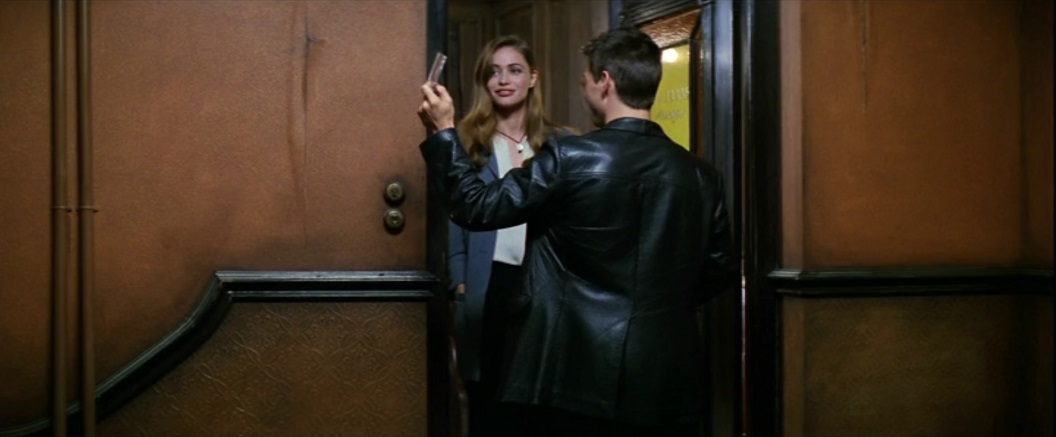
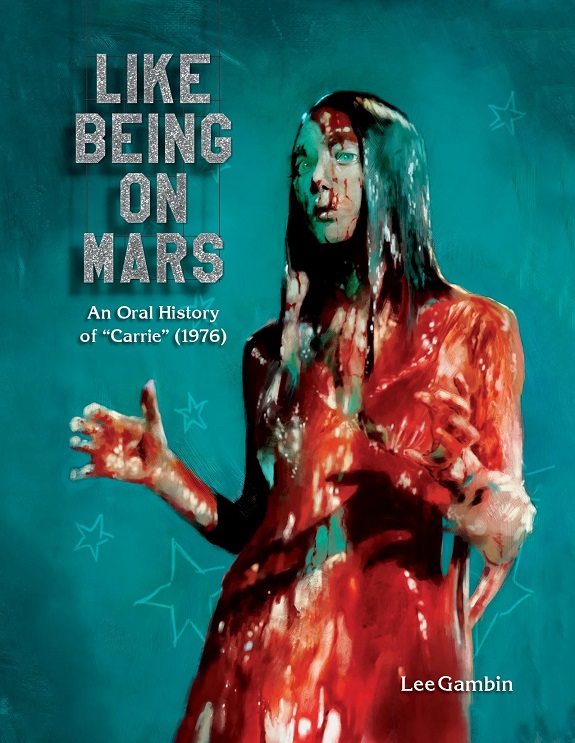
Alright - Sissy is too busy to write a foreword, that's fine - she delivers a fabulous interview for the book....but yes, the oral history of CARRIE is about to hit the printers! I reckon I expect it to be available by September. Lots of folk to thank - of course all the CARRIE alumni who are in the book (such as Sissy, Piper, Mr. King, Brian, Nancy, Amy, William and more), the wonderful Ryan Clark, Manoah Bowman, Darren Cotzabuyucas, Ben Ohmart, Chris Dumas, Michael Broom and a bunch of other folk.
The front gatefold is very cool - Darren, my fab designer, made it look like a high school year book with all the interviewees.